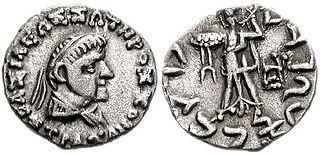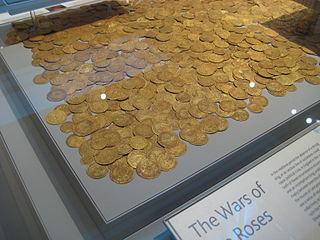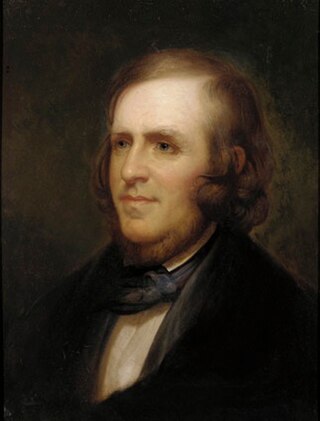Related Research Articles

The Royal Aeronautical Society, also known as the RAeS, is a British multi-disciplinary professional institution dedicated to the global aerospace community. Founded in 1866, it is the oldest aeronautical society in the world. Members, Fellows, and Companions of the society can use the post-nominal letters MRAeS, FRAeS, or CRAeS, respectively.

The Royal Asiatic Society of Great Britain and Ireland, commonly known as the Royal Asiatic Society, was established, according to its royal charter of 11 August 1824, to further "the investigation of subjects connected with and for the encouragement of science, literature and the arts in relation to Asia." From its incorporation the society has been a forum, through lectures, its journal, and other publications, for scholarship relating to Asian culture and society of the highest level. It is the United Kingdom's senior learned society in the field of Asian studies. Fellows of the society are elected regularly and include highly accomplished and notable scholars of Asian studies; they use the post-nominal letters FRAS.

Sir Charles William Chadwick Oman, was a British military historian. His reconstructions of medieval battles from the fragmentary and distorted accounts left by chroniclers were pioneering.

Strato IISoter also known as Stratha, was an Indo-Greek king. He ruled c. 25 BCE to 10 CE according to Bopearachchi. R. C. Senior suggests that his reign ended perhaps a decade earlier. He may have been supplanted by the Indo-Scythian Northern Satraps, particularly Rajuvula and Bhadayasa, whose coins were often copied on those of the last Indo-Greek kings. Numerous coins of Rajuvula have been found in company with the coins of the Strato group in the Eastern Punjab and also in the Mathura area: for example, 96 coins of Strato II were found in Mathura in conjunction with coins of Rajuvula, who also imitated the designs of Strato II in the majority of his issues.
The Royal Society of Tropical Medicine and Hygiene, more commonly known by its acronym RSTMH, was founded in 1907 by Sir James Cantlie and George Carmichael Low. Sir Patrick Manson, the Society's first President (1907–1909), was recognised as "the father of tropical medicine" by his biographer. He passed the post on to Sir Ronald Ross, discoverer of the role of mosquitoes in the transmission of malaria.

The British Museum Department of Coins and Medals is a department of the British Museum involving the collection, research and exhibition of numismatics, and comprising the largest library of numismatic artefacts in the United Kingdom, including almost one million coins, medals, tokens and other related objects. The collection spans the history of coinage from its origins in the 7th century BC to the present day, and is representative of both Eastern and Western numismatic traditions.

The Waterloo Medal is a military decoration that was conferred upon every officer, non-commissioned officer and soldier of the British Army who took part in one or more of the following battles: Ligny, Quatre Bras and Waterloo.
Sir George Francis Hill, KCB, FBA was the director and principal librarian of the British Museum (1931–1936). He was a specialist in Renaissance medals.
The Southern Africa Association for the Advancement of Science (S2A3 or S2A3) is a learned society, originally known as the South African Association for the Advancement of Science (SAAAS). Established in 1902, its principal aim is to increase the public awareness and understanding of science, engineering and technology, and their role in society, by means of various awards and by communicating the nature, processes, ethics, and excitement of science. Membership is open to all.

Benjamin Franklin Peale was an American officer of the Philadelphia Mint from 1833 to 1854. Although Peale introduced many innovations to the Mint of the United States, he was eventually dismissed amid allegations he had used his position for personal gain.

Sir George Macdonald was a British archaeologist and numismatist who studied the Antonine Wall.

Sir Richard Burn was an English civil servant in British India, historian of India and numismatist. He was the editor of Volume IV of The Cambridge History of India and contributed four chapters to Volume VI of that work on the Indian political situation after 1900.
The Medal of the Royal Numismatic Society was first awarded in 1883. It is awarded by the Royal Numismatic Society and is one of the highest markers of recognition given to numismatists. The president and Council award the medal annually to an "individual highly distinguished for services to Numismatic Science".
John Allan, was a British numismatist and scholar of Sanskrit. Allan was a noted numismatist and produced the first systematic study of the coins the Gupta Empire, which remains a standard reference today.
Richard Bertram Whitehead, usually cited as R. B. Whitehead, was a British numismatist and an authority on Indian coins. He played "a major role in establishing the study of coinage as an essential technique of Indian historical research", for which he received numerous awards and honours, and was the first Honorary Fellow of the Numismatic Society of India.

Strato IIIPhilopator was an Indo-Greek king who ruled c. 25 BCE to 10 CE. He is only known through the joint coins with his father Strato II. He may have been supplanted, in conjunction with his father or later as an independent king, by the Indo-Scythian Northern Satraps, particularly Rajuvula and Bhadayasa, whose coins were often copied. Strato was the last of the line of Diodotus and independent Hellenistic king to rule at his death in 10 AD.
George Cyril Brooke (1884–1934) was a British numismatist, specialising in the coins of England.
Henry Nelson Wright (1869–1941) was a British civil servant in India and a numismatist, specialising in Indian numismatics, for which he is best known.

Mughal currency was coinage produced and used within the Mughal empire.
References
- ↑ Numismatic Society of India
- ↑ Bivar, A. D. H. (1967). "Richard Bertram Whitehead 1879-1967". The Numismatic Chronicle. 7: 279–286. ISSN 0078-2696.
- ↑ "Numismatic Society of India - Research".